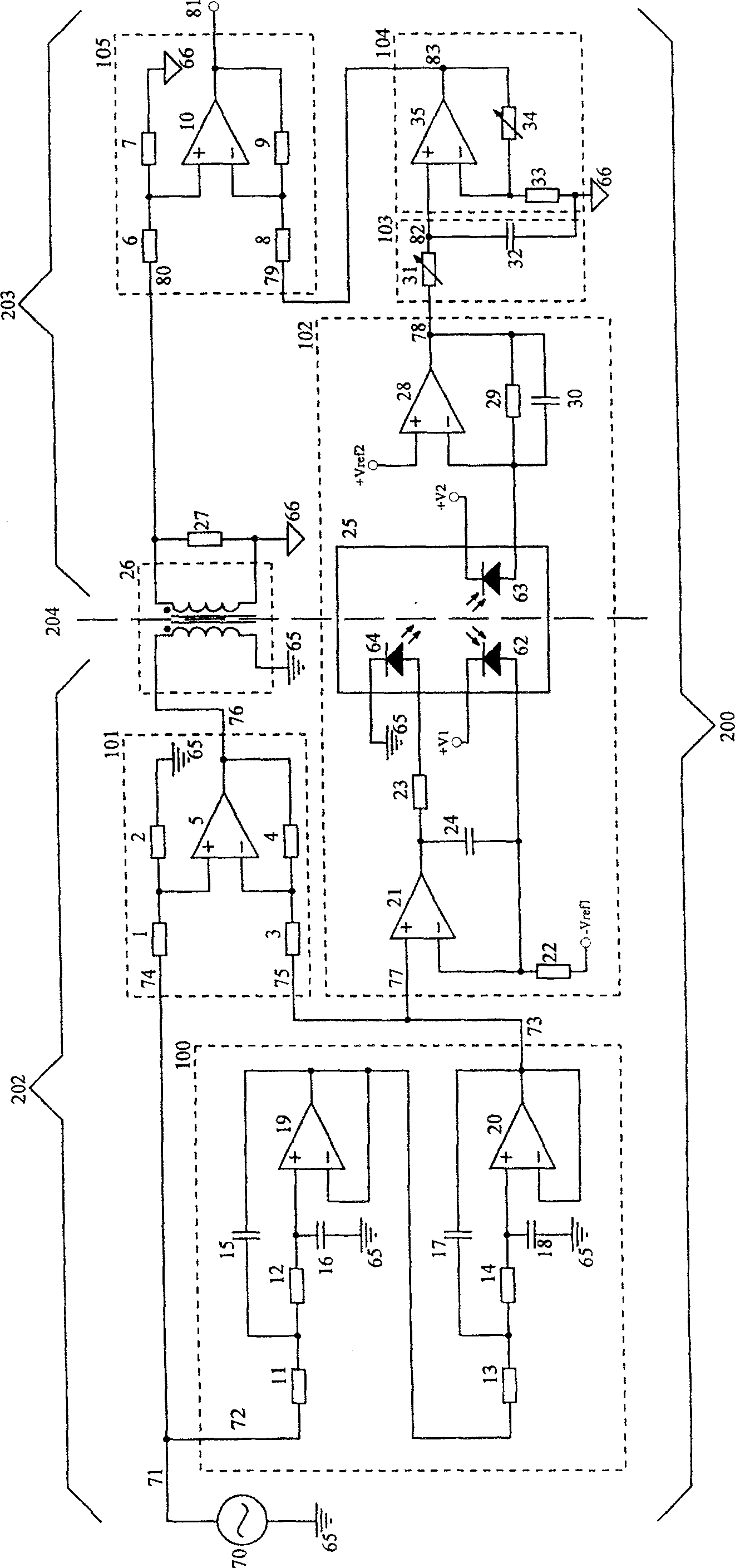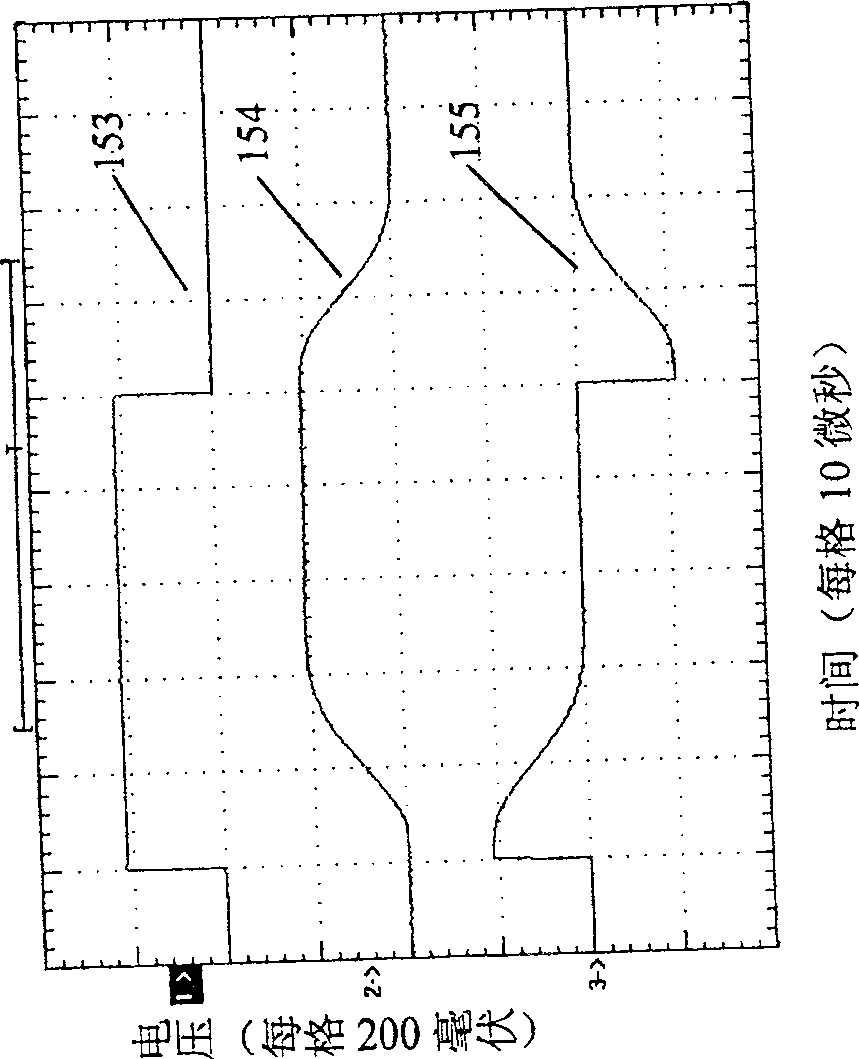Shunt circuit linearity insulating circuit apparatus
A technology of isolation circuit and photoelectric isolation circuit, which is applied in measuring devices, DC isolation amplifiers, voltage/current isolation, etc., and can solve problems such as complex transformers, magnetic core saturation, and low common-mode rejection of photoelectric isolation circuits.
- Summary
- Abstract
- Description
- Claims
- Application Information
AI Technical Summary
Problems solved by technology
Method used
Image
Examples
Embodiment 1
[0036] Such as figure 1 As shown, each part in the figure is formed by connecting electronic components in a dashed frame. The device of the present invention is a branched isolation circuit device 200 (hereinafter referred to as the device 200), which consists of a low-pass filter 100 (hereinafter referred to as the filter 100), a subtractor 101, a transformer 26, and a linear photoelectric isolation circuit 102 (hereinafter referred to as an optocoupler). Circuit 102), time constant adjustment circuit 103 (hereinafter referred to as circuit 103), low-path gain adjustment circuit 104 (hereinafter referred to as circuit 104), and signal combining circuit 105 (hereinafter referred to as combiner 105). The signal under test 70 is connected to the input terminal 71 of the device 200. The input 71 of the device 200 is connected to the input 72 of the filter 100 and the positive input 74 of the subtractor 101. The output terminal 73 of the filter 100 is connected to both the negative ...
Embodiment 2
[0057] figure 1 The circuit in has a high common-mode rejection ratio to DC and low-frequency common-mode interference, but the common-mode rejection to high-frequency common-mode signals is relatively small. In order to further improve the high frequency common-mode rejection ratio of the split-line isolation circuit device, the figure 1 The circuit is changed to a differential form. Figure 8 An example of the differential form is given. in Figure 8 In the low-pass filter 100, the subtractor 101, the transformer 26, the optocoupler circuit 102, the time constant adjustment circuit 103, the low-path gain adjustment circuit 104 and the signal combination circuit 105 figure 1 The embodiments shown are the same, and will not be repeated here. The difference is that the transformer driving and receiving are changed to differential driving and differential receiving. The opto-isolation circuit adds a set of circuits exactly the same as the optocoupler circuit 102, namely the opto...
PUM
 Login to View More
Login to View More Abstract
Description
Claims
Application Information
 Login to View More
Login to View More - R&D
- Intellectual Property
- Life Sciences
- Materials
- Tech Scout
- Unparalleled Data Quality
- Higher Quality Content
- 60% Fewer Hallucinations
Browse by: Latest US Patents, China's latest patents, Technical Efficacy Thesaurus, Application Domain, Technology Topic, Popular Technical Reports.
© 2025 PatSnap. All rights reserved.Legal|Privacy policy|Modern Slavery Act Transparency Statement|Sitemap|About US| Contact US: help@patsnap.com



